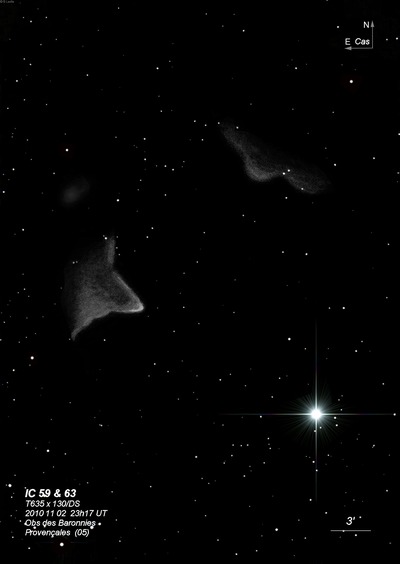
IC 59 and 63 were discovered independently on photographs taken by Max Wolf (probably towards the end of 1893) as well as E.E. Barnard on a plate taken 2 Feb 1894 of 3 hours exposure. Wolf announced the discovery in AN 134 [3214], 365 (1894), "Ueber einige neue Nebelflecke" (Some New Nebulae). Barnard stated "before beginning this [second] exposure [on 6 Feb 1894], I carefully examined the sky close to Gamma with the 12-inch and a power of 80, with a field of 42'. The sky was fine. It was with the utmost difficulty that I could see these two nebulae. They were excessively dilute and faint, and never would have detected if the photographic plate (from 2 Feb) had not revealed them." Roberts photographed the Gamma Cas area earlier on 17 Jan 1890, but his image shows no nebulosity and he failed to mention nebulosity in the field.
300/350mm - 13.1" very faint, fairly large, very diffuse, visible with averted only. Forms a pair with IC 63.
400/500mm - 17.5" (11/1/86): located 20' N of Gamma Cassiopeia. This emission nebula is larger than IC 63 but has a lower surface brightness. Easy with averted vision and appears large, elongated ~N-S, with a fairly even surface brightness. IC 63 lies 20' SE.
Notes by Steve Gottlieb